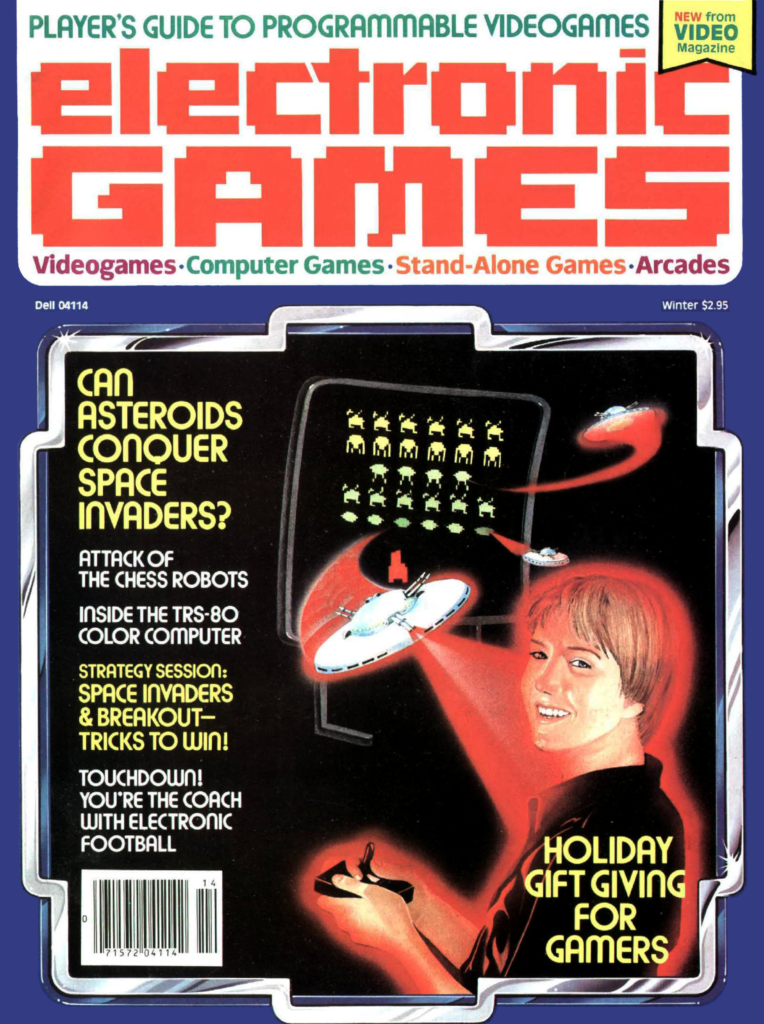
The first gaming magazine in the U.S. was called Electronic Games magazine (not to be confused with Electronic Gaming Monthly). It spun out from a column in VIDEO magazine called “Arcade Alley,” written by Arnie Katz and Bill Kunkel (the latter under the pseudonym “Frank T. Laney, The Second”).
At the beginning of 1980, Katz and Kunkel decided video games should have some sort of annual awards, like the Oscars or the Grammys. So they dreamed up the Arkies, a.k.a. the Arcade Awards.
Without a budget to televise the proceedings — or to hold any, for that matter — the Arkies were simply printed within “Arcade Alley” (and later in Electronic Games magazine), as decided upon by the editors.
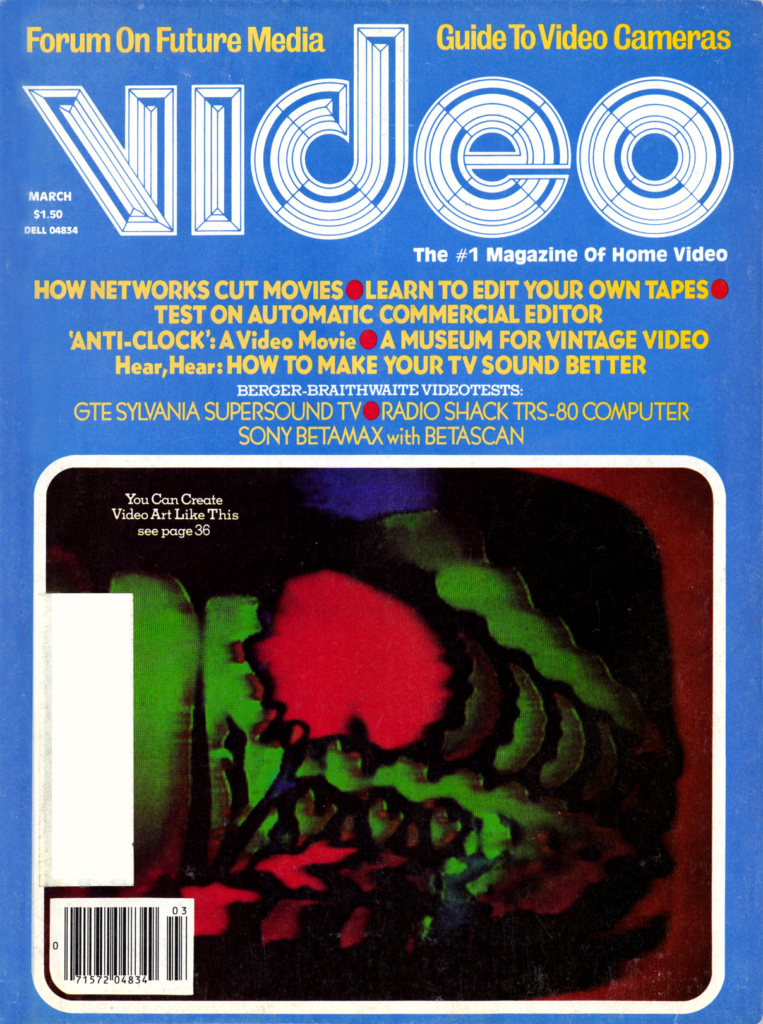
But until recently, the very first Arkies has never been available in full online, due to issues of VIDEO being so hard to find. Where gamers liked to hold onto their old issues, it turns out videophiles were much more likely to throw out what was essentially (other than the gaming column) a Consumer Reports for home theater equipment.
The largest online collection of “Arcade Alley” scans comes from Atari Compendium, but it still contains holes. However, the Video Game History Foundation has been doing its best to fill in those holes, and now we finally have a scan of the elusive March 1980 column!
Not only do the editors elaborate on why they chose these winners, but it turns out the list reprinted in Electronic Games was incomplete! Finally we can read the first game awards in their entirety.
And The Winner Is…
Despite the name, the Arcade Awards — and “Arcade Alley” itself — didn’t focus on arcade cabinets so much as “home arcade games.” Most years the Arkies only considered the previous years worth of releases, but for the first years they decided to do things a little differently:
“Since this is the first go-round for the Arkies, it seemed somehow unfair to ignore noble efforts just because they didn’t fall neatly within the confines of calendar year 1979. Accordingly, the first set of Arkies covers everything available in the home arcade field as of January 1, 1980.”
So this isn’t the game awards of 1979, but the game awards of the ‘70s. It’s a fascinating time capsule looking at the best home video games had to offer right before the dawn of the ‘80s.
But if you’re not familiar with pre-‘80s gaming, you might look at each of these primitive early games and wonder, “how could this be considered worthy of an award?”
To help put these awards in context, I’ve provided additional commentary below each award. How much have games changed since 1980? How much has writing about games changed since 1980? Let’s take a look back from the distant future of 2020.
BEST HARDWARE
Magnavox Odyssey²

“The games themselves are probably the most important part of any home arcade system, but well-designed components certainly add to players’ enjoyment. The Odyssey² console, which features a full monoplane keyboard, is very attractive — yet rugged enough to stand up under regular play.
“The Odyssey² joystick controllers are, quite simply, the best available. They require less hand strength to manipulate, too, which comes in mighty handy when playing games that call for a lot of manual dexterity.”
Today a category called “Best Hardware” would typically discuss what’s under the hood, but in those early days it was about the hood itself. I’m not sure they had access to any specs, and even if they did, I think it was generally assumed that readers wouldn’t know what those specs meant.
Or to put it another way, the focus was on playability more than power. A durable console and responsive controllers.
If you’re surprised Atari didn’t win, don’t worry — they figure out a way to give that console an award too.
BEST AUDIO & VISUAL EFFECTS
Bally
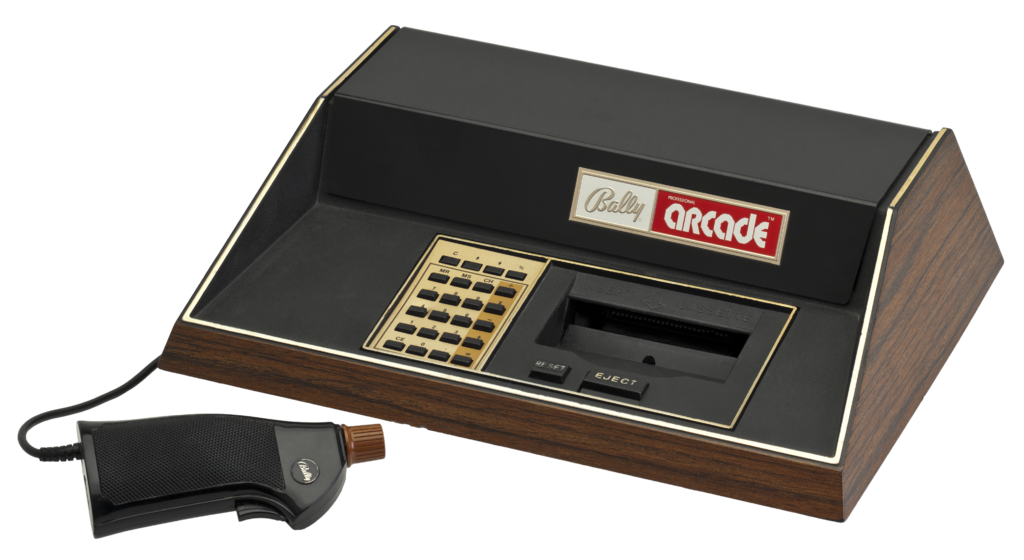
“It beeps, it bangs, it jingles, it chimes — and the games explode off the screen in a rainbow of colors. Nothing creates that delightful arcade atmosphere like superior sound and visual effects, and the Bally system is the undisputed champ in this regard.
“Decades of dominance in the pinball machine business have made Bally conscious of the fact that a truly complete game must sound and look right in addition to playing well. Their games are a symphony of fluid animation, vibrant color, and tasteful sound effects. It’s “window dressing” like this that elevates an excellent game like Bally Football to the level of a home arcade masterpiece.”
The reason Bally Arcade had the highest quality audio and visual effects is because it was the most powerful game console of the ‘70s. It was also the most expensive, as well as the most fragile!
In other words, this category is essentially what we’d normally call “Best Hardware” today. But how do you describe to a non-techie consumer what makes one console more powerful than another? Audio and visual quality is something everyone understands.
BEST GAMES
Atari
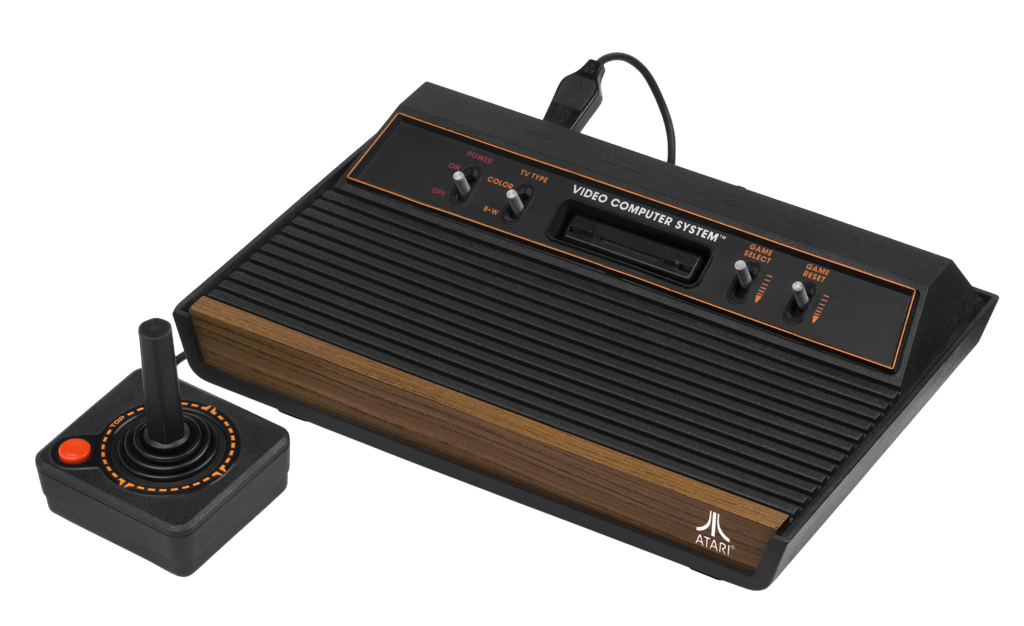
“‘The play’s the thing,’ quoth William Shakespeare, and some of the Bard’s spiritual descendants must be working in Atari’s design department. The folks who started it all with Pong now offer an unmatched array of the most competitive and exciting game cartridges available to the home arcade addict.
“Atari’s line of 20 game cartridges (embodying over 1300 distinct variations) literally has something to suit every taste. Whether the gamer’s choice is the continuous action of Basketball or the more leisurely and subtle Miniature Golf, Atari is ready to satisfy. The company’s games excel because they are simple without being simple-minded, easy to play without being boringly easy to master.”
I think it’s generally agreed that Atari had the largest library of fun games pre-Nintendo, but to see it recognized this early? This was still before Atari’s killer apps like Space Invaders, not to mention before the existence of third-party games like Activision’s Pitfall!
The rest of the awards are for individual games, but note that some 1979 releases ended up in the awards for 1980 instead. For example, Atari’s Superman was released in the fall of 1979, but apparently Katz and Kunkel didn’t have a copy yet, so instead it got its Arkie the following year.
BEST PONG VARIANT
“Volleyball” (Atari Video Olympics)
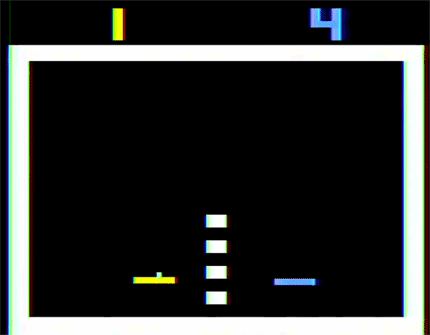
“For those weary of regulation Pong, Atari has created something at least as much fun by turning it on its side. Two players, each controlling a horizontal paddle, bounce the ball back and forth over the net to score points.
“A unique ‘spiking’ feature allows players to leap for the ball and then smash it down into their rival’s end of the court. The game reproduces the flavor of real volleyball by making the ball arc higher each time a player hits it more than once in a row. A four-player version on the same cartridge is also highly recommended.”
You might wonder why “Pong Variant” is even a category, but they were practically an entire subgenre in the early days of commercial video games. When Atari programmer Joe Decuir ported Pong to the console, he really went for it trying to come up with creative variations.
But personally, I’m shocked they didn’t give the Arkie to Breakout. I wonder if they didn’t consider it a Pong variant? Or maybe they just had a bias for multiplayer games.
BEST SPORTS GAME
Football (Bally)
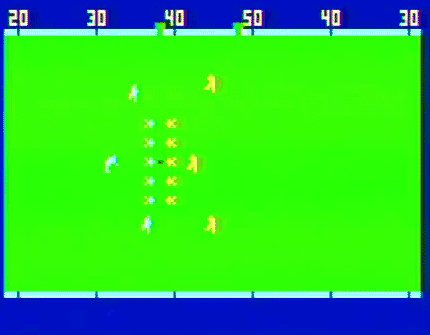
“This game provides arcade lovers with an amazing amount of pigskin action — including inside and outside running, pass interceptions, quarterback sacks, razzle-dazzle plays, and even a ‘mad dog’ linebacker on defense! Would-be quarterbacks can select from a wide range of plays, with the available choices altering to reflect current field position.
“The best part is that Bally wisely decided not to squeeze the whole gridiron on the screen at the same time. Instead of squinting at a tiny full-size field, players luxuriate in the detailed presentation of the 40-yard segment that is actually the focus of the action. When a play goes for an unusually long gain, the next 40-yard section automatically fills the screen.”
Today it might seem a little weird to dedicate a paragraph to describing how the game happens across multiple screens, but that’s just how rare it was back then.
Most video games of the ‘70s were contained within a single unmoving screen, called a “playfield.” Thinking outside of this box was still relatively new territory.
BEST TARGET GAME
Air-Sea Battle (Atari)
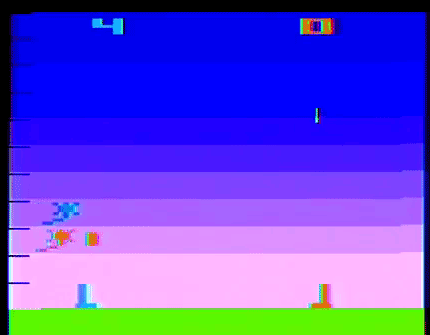
“Whether you prefer firing anti-aircraft bursts, torpedoes, or depth charges, this is video war at its finest. In the anti-aircraft and torpedo games, an assortment of juicy targets zip across the top two-thirds of the playfield, shooting-gallery fashion, while players vie to see how many they can blast out of existence. ‘Torpedo,’ our personal favorite, is especially lively when played with guided missiles.”
“Another Air-Sea Battle variation, ‘Polaris vs. Bomber,’ is not for the fainthearted. One player’s airplane drops depth charges over the other player’s sub, which answers with nuclear missiles of its own. It takes a steady hand, indeed, to fire accurately while dodging destruction.”
Space Invaders was the most popular arcade game since Pong, but you couldn’t play it at home — at least, not for another year. Until then, certain modes in Air-Sea Battle were the closest you could get.
None of the modes featured the tight rows of enemies that were so addicting in that Breakout-esque way, but the Atari game did have one feature Space Invaders didn’t: two-player simultaneous play.
BEST SCIENCE FICTION GAME
Cosmic Conflict! (Magnavox)

“The incredible success of Star Wars has boosted the popularity of science fiction to new heights in recent years. Video game makers, responding to this upswing in consumer demand, have jumped on the bandwagon, filling home screens with enough spaceships, stars, and planets to satisfy any s.f. fan.
“The best among the many excellent space games is Cosmic Conflict. This solitaire triumph casts the player in the role of defender of freedom in the galaxy, pledged to stop the invading fleet from destroying our corner of the universe. The use of two different types of targets — defenseless transports and deadly starfighters — keeps things lively throughout this fast-paced shootout in space.”
Imagine a world where no one has seen Empire Strikes Back yet, but it’s one of the most anticipated movies of the year. That’s when these game awards were written.
The first Star Wars movie completely changed how video games interpreted space flight. The earliest games involved rocket ships or lunar landers that were slow moving and difficult to steer, but after 1977 it was all about aerial dogfights in space.
If you’re confused why they would call it a “solitaire triumph” when no playing cards are involved, “solitaire” was the word they always used where we would say “solo.” Also note that science fiction fans used to abbreviate it “s.f” before it became “sci-fi.”
BEST SOLITAIRE GAME
Computer Golf! (Magnavox)
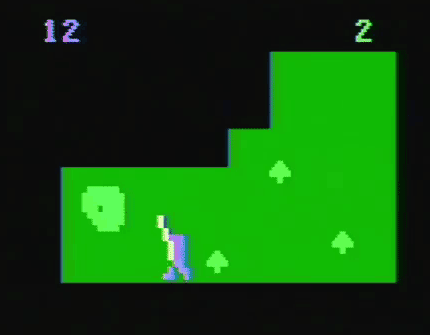
“Since arcade game opponents aren’t always available when you want to play, dedicated gamers should have solitaire entertainments like Golf in their collections.
“A tiny on-screen golfer drives and putts around nine holes distinguished by such expected links obstacles as water and rough. Once he reaches the green, a marvelous thing happens — the playfield shifts from an overview of the entire hole to a close-up of the green.
“The little golfer can blast down the fairway with the best, but he has very little patience. After a particularly inept shot, he’ll bash his club up and down on the ground in raging fury. (Does this sound like anyone you know?)”
Here’s another fun thing we take for granted today: zooming in from a map overview to a close-up “action” view. Did golf games inspire the overworld maps of JRPGs?
Also, I think this might be the first game to give the player character some sense of a personality? The golfer’s temper tantrums seem like a precursor to the playful idle animations of the ‘90s.
MOST INNOVATIVE GAME
Basketball (Atari)
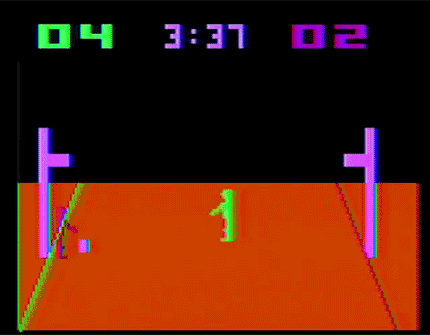
“Most video basketball games offer only two-dimensional play, but Atari wins this Arkie for adding the vital ingredient of court depth. Since the court is presented as a trapezoid, players can move from side to side as well as up and down between the hoops. This unique concept opens up the game, introducing elements of defense and position play never before available in an arcade basketball game.
“Atari builds on this excellent foundation by introducing shot blocking for defensive players and an excellent solitaire version for those lonely evenings at courtside.”
I know this seems like a lot of sports games winning awards, but when the video game industry is launched by a game based on tennis, I guess it takes awhile to shake off. Plus, when players already know the rules to the game, maybe it gives you more room to innovate.
And how wild is it that such a primitive-looking version of basketball was considered innovative? But it’s easy to take for granted the concept of game level or playfield being drawn in perspective. Finally the player could experience four-dimensional movement while also being able to jump — the latter being difficult to pull off in a purely overhead view.
BEST COMMERCIAL ARCADE GAME
Space Invaders (Bally/Midway)
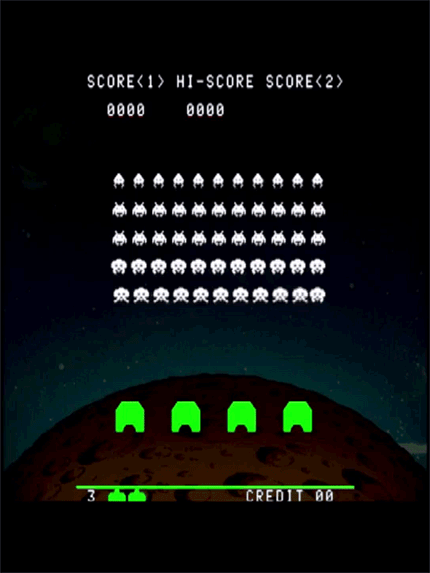
“The most popular new arcade attraction since electronic games began, Space Invaders first caught on in Japan; school-children in that country cut classes en masse in order to feed their yen to this ingenious machine. Bally purchased the U.S. rights, reworked the design into a more conventional upright format, and immediately found that Americans love it too.
“Players maneuver a laser cannon horizontally along the bottom of the playfield while five columns of space monsters march down the screen, firing their weapons as they come. Players have the extra advantage of four protective bunkers, but these are gradually disintegrated by incoming and outgoing fire. The game gives three rounds of play for 25¢, a round ending whenever the invaders successfully blast the player’s cannon.”
After Katz and Kunkel went into detail describing what they liked about each of the previous games, it’s kind of disappointing that it seems like they merely described how Space Invaders is played.
Or maybe the fact that this had to be described is an indication of just how new this all was. Sure, the game is essentially just Breakout with a gun where the blocks shoot back. But shooting at an army of ships marching towards you was very new.
What appears at first to be the most unnecessary sentence is actually the most interesting: “three rounds of play for 25¢.” You have three lives in Space Invaders, but the term “lives” didn’t exist yet! Even the concept of displaying your remaining ships on screen was a new concept.
And even if they had the extra space, how do you explain to someone what made Space Invaders fun, or Pong for that matter. They already used up the perfect description when talking about Atari games: “simple without being simple-minded, easy to play without being boringly easy to master.”
Closing Thoughts
Video games of the ‘70s were a little bit like the earliest films from the silent era, when directors were first innovating basic cinematic techniques like cutting to a new scene or cutting to a close-up. Also, these games were very “quiet” in that they featured sparse sound effects but no music.
They might not be as exciting as today’s games, but they’re important when trying to understand how we got to where we are today.
Now we just need to find the issue with the 2nd annual Arkies!
“And there you have them, the 10 winners of VIDEO’s first annual Arcade Awards. We invite you to write us, in care of the magazine, with your thoughts and opinions about the home video arcade scene.”
Hey, write or tweet us with your thoughts and opinions on the ’70s home video arcade scene.
If you’re looking for more ‘70s game history, you should check out the Youtube channel Atari Archives by Kevin Bunch, who I captured most of these gifs from. You can also follow him on Twitter.
Console images come from Evan Amos.
And if you enjoy my writing, you can find more more at my website, A Critical Hit!, and I can also be found on Twitter.